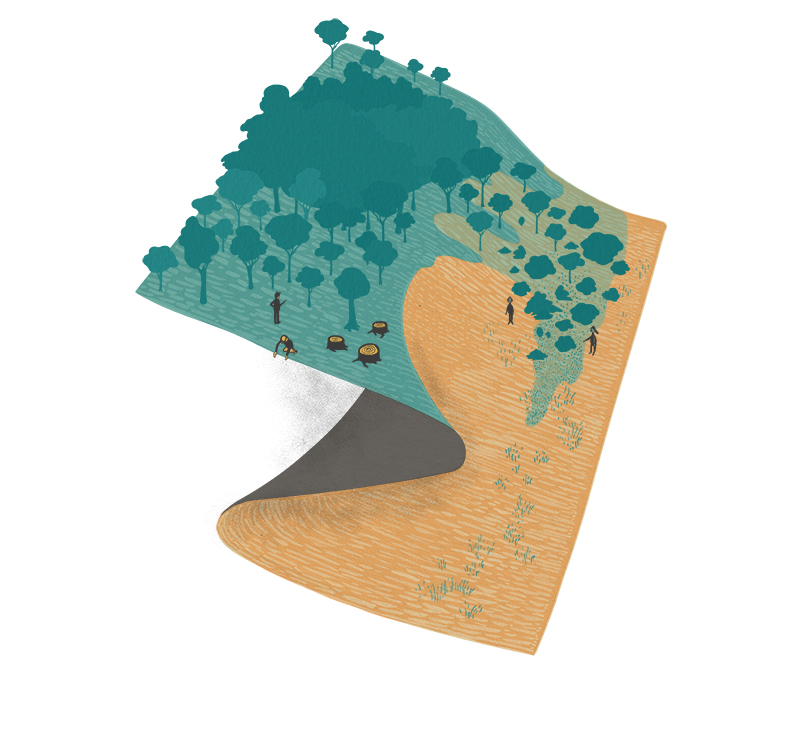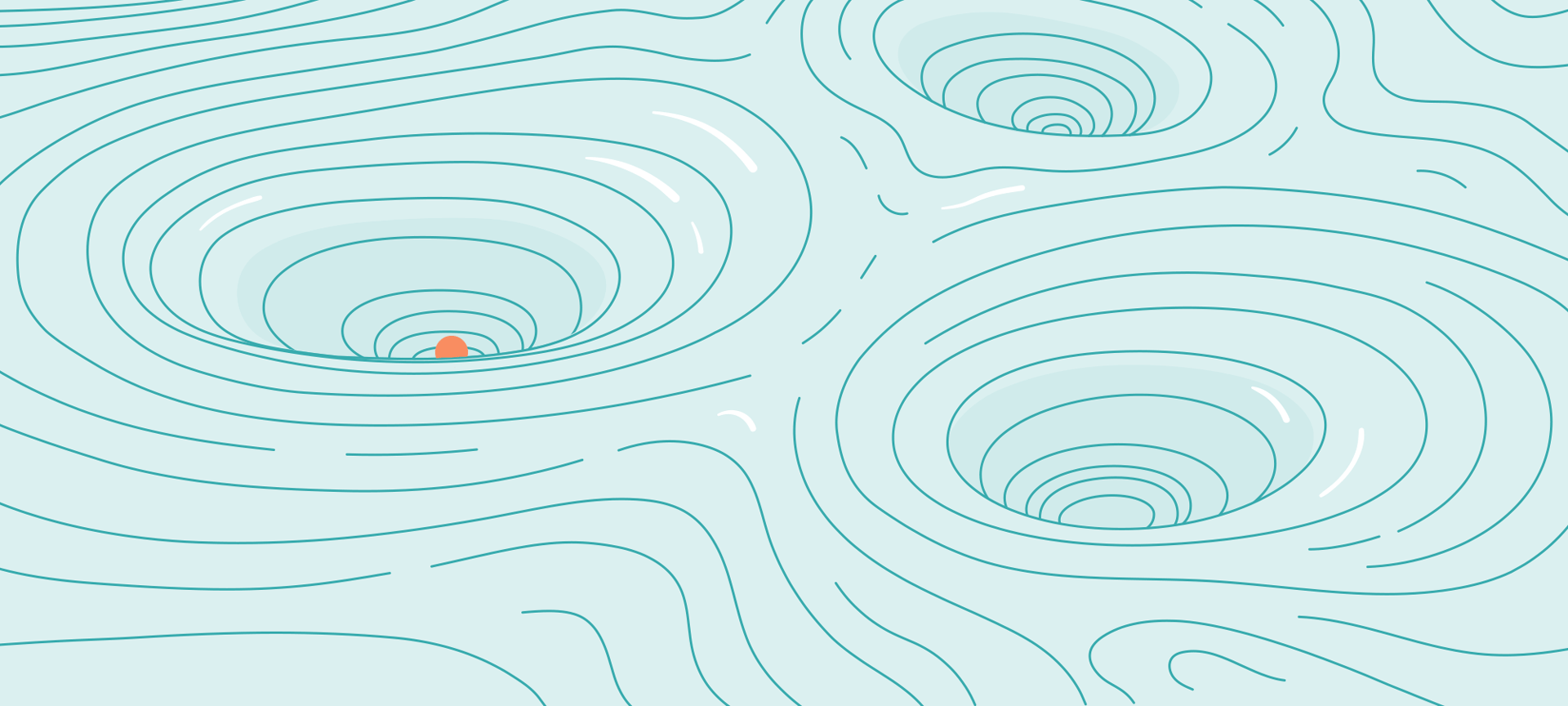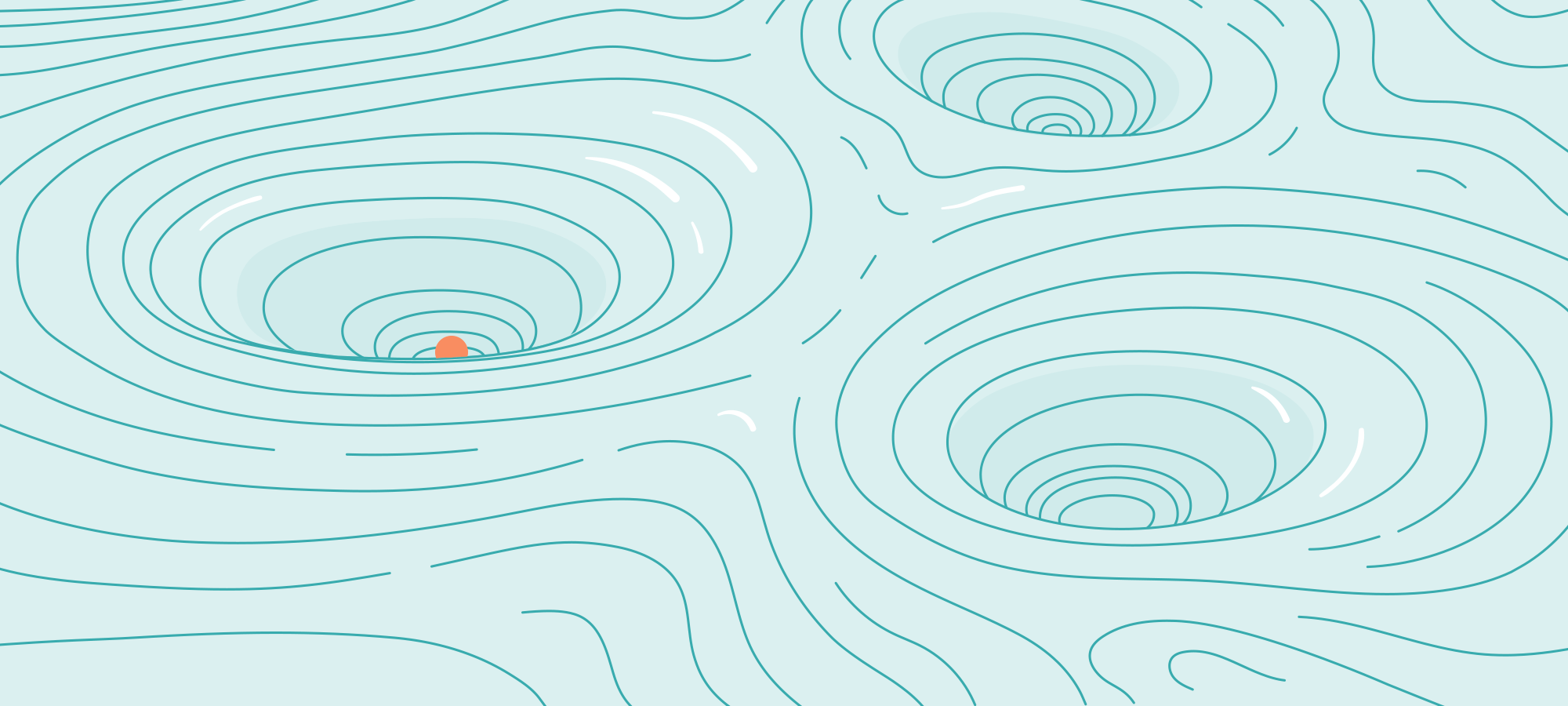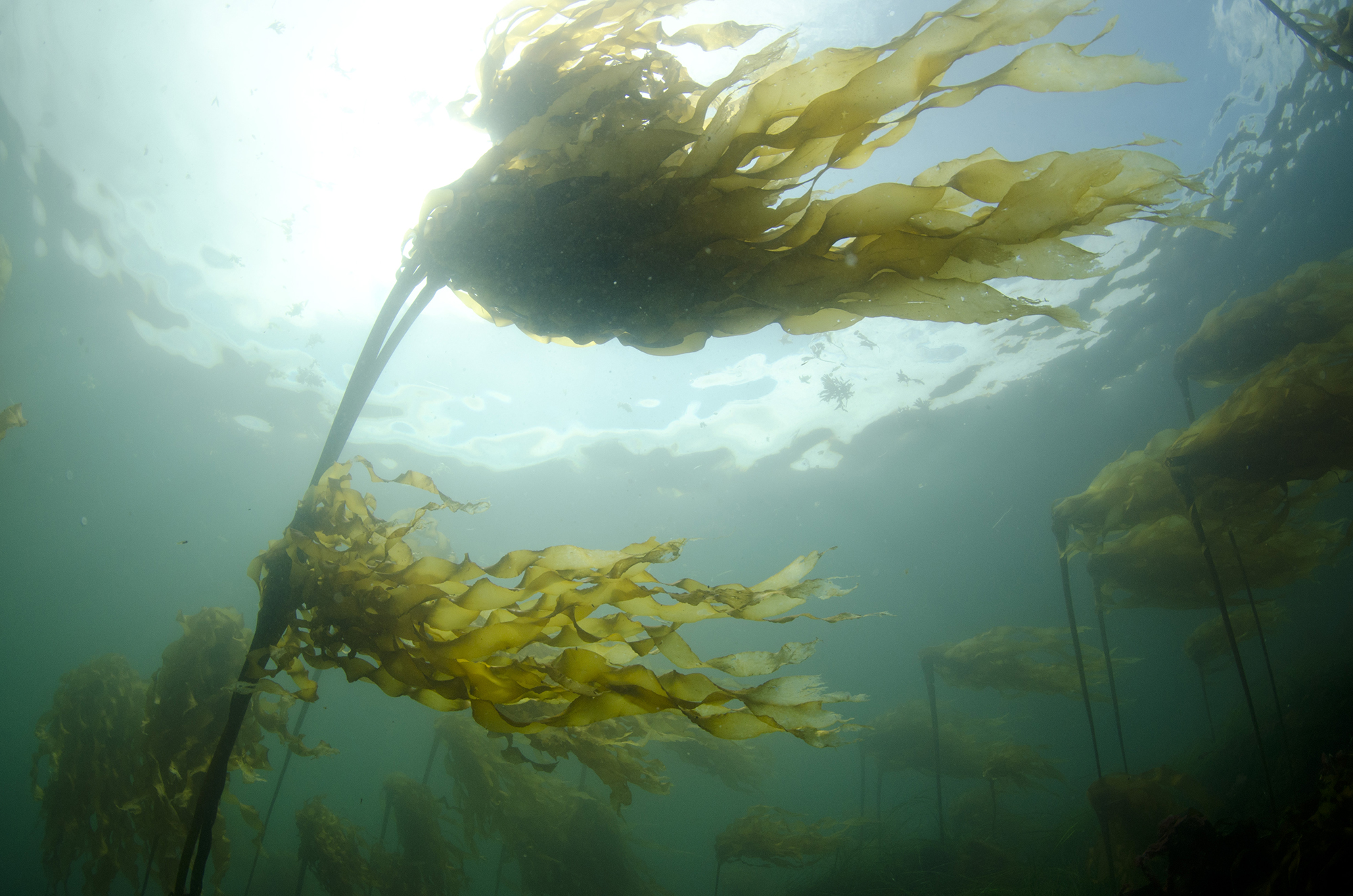Approximately 720 million years ago, the world was encased in ice, frozen from pole to pole. This “Snowball Earth” – an uninhabitable planet, save for a few spots of refuge for bacteria along the equator – stayed frozen for about 80 million years before thawing out. Carbon dioxide had been bubbling from volcanoes and vents underneath the surface of the ice for millions of years.
Finally the carbon dioxide probably built up to 300 times today’s levels – surpassing a critical tipping point – and the greenhouse effect caused the ice sheets to melt. “We went out of the freezer and into the frying pan”, says Timothy Lenton, an Earth system scientist at the University of Exeter.
Since the unfreezing of Snowball Earth, multicellular life has emerged. Dinosaurs came and went. For the last tiny fraction of geological time, humans have populated the planet. If the Earth has been around for 24 hours, humans appeared in the last few seconds. In an even shorter amount of time, the industrial revolution has unfolded and human activities in parts of the world now put demands on natural systems across the globe in unprecedented ways.
Overfishing has led to the collapse of cod populations in the United Kingdom, Canada, and other Atlantic Ocean countries. Nitrogen and phosphorus from agricultural runoff have led to algal blooms that suck oxygen from lake waters and are sometimes toxic. And continued human-driven, or anthropogenic, global temperature rise has altered India’s summer monsoon patterns – Lenton and his colleagues speculate that the consequences of human activities will eventually turn the Amazon rain forest into savanna, and melt the ice sheets in Greenland and Antarctica.1 1. Boulton, C. A., Good, P., Lenton, T. M., 2013. Early warning signals of simulated Amazon rainforest dieback. Theoretical Ecolology 6:373. DOI: 10.1007/s12080-013-0191-7 See all references
From a human-centred point of view, we are in danger of putting ourselves into a situation that seems nearly as untenable for our civilisation as Snowball Earth, and on a much faster timetable. As the habitable version of Earth spins on its tilted axis, the different systems contained within it – the biosphere, atmosphere, and geosphere – currently provide services vital to our survival and well-being.
But they can also shift at critical tipping points. A tipping point is where a system can flip and turn into something different. Reversing the actions that pushed the system to tip does not mean the system will tip back. And the scale at which these changes happen – from your back garden to the boundaries of the atmosphere – becomes important.
Identifying tipping points, researchers say, could help communities stave off potentially drastic changes in the future. Or it could help them push towards tipping points to create changes that might lead to more desirable circumstances.
Where did the term “tipping points” originate?
The idea of a tipping point had been around since the 19th century when French mathematician Henri Poincaré was studying the movement of celestial bodies and realised that systems could shift rapidly from one equilibrium to another. He didn’t call the point at which the system shifted a “tipping point”, but knew that systems could reach a critical point where they would bifurcate. Literally, systems come to a fork in the road and can follow one path or the other.

A bifurcation in a system can happen abruptly, even with a seemingly small change in its underlying functions. Illustration: E. Wikander/Azote.
The recognition of tipping points runs counter to the idea of linear thinking, where one event leads to another. In a linear world view, effects are additive and predictable, and to a large extent reversible. The real world has shown us repeatedly that this is not the case. Tipping points are most visible in single events, but actually stem from the dynamics of multiple factors.
For example, the cod population of the Atlantic northwest collapsed in what was seemingly a single event of overfishing in the 1990s, but was actually the result of decades of overfishing by many fishing fleets, improvements in fishing technology, a growing market and demand for cod, and other factors. The ensuing fishing restrictions did not lead to a rapid recovery of the fish population and, 20-plus years on, it has still not returned to what it was.
Not until 1957 did Morton Grodzins, a political scientist at the University of Chicago, first formally use the phrase “tip point”. He used it to describe the threshold at which whites began to move out of a neighbourhood once African Americans started moving in.2 2. Grodzins, M., 1957. "Metropolitan Segregation As Negroes move in from the South and whites move out to the suburbs a new pattern of segregation emerges in the big cities of the U. S., bringing with it significant economic, social and political problems." Sci. Am. October 1, 1957 [Scientific American website] See all references The first ecological application of a “tipping point” appeared approximately two decades later, when ecologist C. S. “Buzz” Holling was studying forests in Canada that were prone to spruce budworm infestations. In one possible state, predators could keep the destructive spruce budworms in check. In another, the pests could unleash their prowess by defoliating the forest and thrive until the trees died out. Holling was able to show that certain stressors could flip what seemed to be a stable ecosystem into an alternative state.
But the term wasn’t popularised until Malcolm Gladwell’s book The Tipping Point was published in 2000. In it, Gladwell highlighted myriad social examples where sudden and unexpected change made a big difference. For instance, he describes how epidemics of sexually transmitted diseases can take off because of the interactions of multiple conditions, from housing infrastructure to the availability of medical care.
While the concept had been around in the ecological sciences for decades, the climate science community didn’t use the term “tipping point” until after Gladwell’s book revived the phrase, first formalised in the scientific literature by Lenton and his colleagues in the mid-2000s. Then, in 2009, 28 leading scientists – including Lenton and Johan Rockström of the Stockholm Resilience Centre – identified nine “planetary boundaries” that mark conditions vital for human survival.3 3. Rockström, J., Steffen, W., Noone, K., Persson, Å., Chapin, F. S. III, Lambin, E., Lenton, T. M., Scheffer, M., Folke, C., Schellnhuber, H., Nykvist, B., De Wit, C. A., Hughes, T., van der Leeuw, S., Rodhe, H., Sörlin, S., Snyder, P. K., Costanza, R., Svedin, U., Falkenmark, M., Karlberg, L., Corell, R. W., Fabry, V. J., Hansen, J., Walker, B., Liverman, D., Richardson, K., Crutzen, P., Foley, J., 2009. Planetary boundaries: exploring the safe operating space for humanity. Ecology and Society 14(2):32. URL: http://www.ecologyandsociety.org/vol14/iss2/art32/ See all references
The nine boundaries together represent an Earth system that maintains the functions and processes that have made it possible for humans to survive and thrive, particularly in the past 10,000 years, or the current geologic era called the Holocene. The researchers were able to quantify seven of them, and showed that we’ve crossed four: climate change, biodiversity loss, land-system change, and altered nitrogen and phosphorus flows to the biosphere and oceans. The planetary boundaries do not directly correspond to tipping points, instead they describe conditions that mean an increased risk of reaching them.

The nine planetary boundaries represent a framework of ideal conditions for humanity. Illustration: Globaïa.
“We worked together to articulate that tipping points are possible, that it’d be good to study them, and any sensible approach to the future would at least account for them”, Lenton says.
In 2015, he and other researchers wrote that “perhaps the most ‘dangerous’ aspect of future climate change is the possibility that human activities will push parts of the climate system past tipping points, leading to irreversible impacts.”4 4. Lontzek, T. S., Cai, Y., Judd, K. L., Timothy M. Lenton, T. M., 2015. Stochastic integrated assessment of climate tipping points indicates the need for strict climate policy. Nature Climate Change 5:441–444. DOI: 10.1038/nclimate2570 See all references In light of this, Lenton believes it’s important to map out the early warning signals that can indicate that a system is close to tipping from one state into another.
If the tipping points in different systems can be identified, then individuals, policy makers, and communities can conceivably change their actions to prevent reaching these tipping points altogether. And, if there’s no way to avoid the tipping points, the stakeholders can take action to absorb the consequences once system A tips into system B. “A trivial investment in the millions [for an early detection system] could warn us of something that could hurt us in the trillions”, Lenton says.
Early warnings, however, rely on understanding the feedbacks in a system that shape it and that could cause it to tip. That can be difficult. “When you get closer to a tipping point, your system will become more variable”, says Oonsie Biggs, a researcher at the Stockholm Resilience Centre. “It can be very unclear as to where the system is going.”

Ball-and-cup model: As conditions change, as in this metamorphosing blue landscape, a system (the orange ball) changes, represented by its motion. Sometimes a system might jump to another configuration (one of the other cups here) as the barriers to jump into a new state shift — crossing a tipping point. Animation/illustration: E. Wikander/Azote.
Tipping points in practice
“People are generally managing systems like there are no thresholds”, says Biggs. She thinks that it is “better to assume that there are many of these thresholds and what they may be rather than assume that there are none.”
In her research, Biggs and her colleagues have studied multiple ecological systems that have tipped from one state into another and documented these instances in the Regime Shifts DataBase.5 5. Biggs, R. et al., 2012. “Regime Shifts”, in Encyclopedia of Theoretical Ecology. Eds: Hastings, A., Gross, L. pp. 609–617. University of California Press. See all references By understanding how shifts can happen in certain systems, people can get a better sense of the conditions under which they occur, and ultimately be able to influence how those systems are managed to avoid reaching tipping points – or to push towards them, Biggs says.
Avoiding undesirable thresholds or tipping points requires resilience. Resilience describes the capacity of a system – be it an individual, lake, forest, city, or economy – to deal with disturbance, change, and development, through persistance, adaptation, or transformation. Resilience in itself, however, is neither a good nor a bad thing.
“You may value some components of an ecosystem whereas other people value different components of an ecosystem”, says Anne Salomon, a marine ecologist at Simon Fraser University in Burnaby, Canada. “It’s not a matter of good or bad, it’s a matter of difference.” Asking questions about the specific context helps clarify wanted outcomes: resilience of what system, to what tipping point, and for whom?

 15 MIN READ / 2513 WORDS
15 MIN READ / 2513 WORDS
![By Ron from Nieuwegein / South Moreton Oxfordshire, Netherlands / UK [CC BY-SA 2.0 (https://creativecommons.org/licenses/by-sa/2.0)], via Wikimedia Commons](https://rethink.earth/wp-content/uploads/2017/11/bali_barat_mangroves.jpg)
